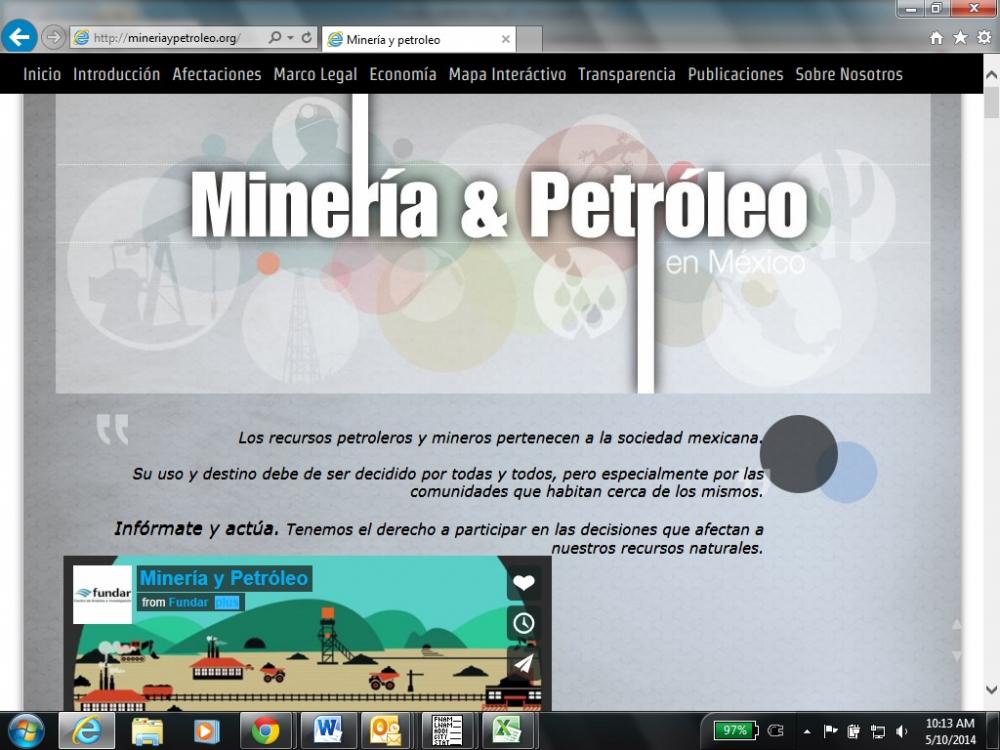
Knowledge Es Poder: Fundar Launches a New Tool in Mexico
We at Fundar are pleased to announce our new website, Mining and Oil in Mexico—the result of ten years’ work. It is the go-to source for those seeking to understand extractive industries in our country. As such, it is a tool for civil society actors to become informed and to strengthen their advocacy.

Mineriaypetroleo.org fills a gap in public access to information about the extractive industries in Mexico, where oil extraction in nine states provides 35 percent of budget revenues and where mining concessions occupy 16 percent of all land.
Mexico’s oil and mining sector has been characterized by opacity and secretive decision-making. Also, as in the rest of Latin America, the development of these industries is accompanied by social, environmental, economic and cultural effects, and human rights violations. That’s why it is essential to develop tools like our site that allow the public a better understanding of extractives management.
Visitors to the new website will find information on the geographical presence of extractive activities in the country; their contribution to the economy and public finances; mechanisms of transparency; oil contracts and mining concessions; social and environmental repercussions of extraction; and the relationship of the mining and oil industries to climate change. For example, they will see how energy reforms passed last December impact Mexico’s public finances, as well as the oil sector’s transparency, accountability and participation mechanisms.
Site users can also find out the exact location of the 26,064 mining concessions for exploration and mining in the country. This is a breakthrough, because to this day if community members wanted to know if their lands were concessions, they had to travel in order to physically check the mining log and also make a series of complicated calculations. So, in practice, this information was beyond the reach of most populations, who in many cases literally learn only the night before that minerals will be extracted in their own backyards. But now, with a single click, or by downloading and printing a map, this information is available to everyone with internet access. This way, we also know which ejidos or communal farmlands, natural protected areas, and indigenous people might be affected by mining.
Aroa de la Fuente is a researcher for the Mexican NGO Fundar, a partner of the Revenue Watch Institute – Natural Resource Charter. She and a colleague coordinate Fundar’s Extractive Industries Project.
